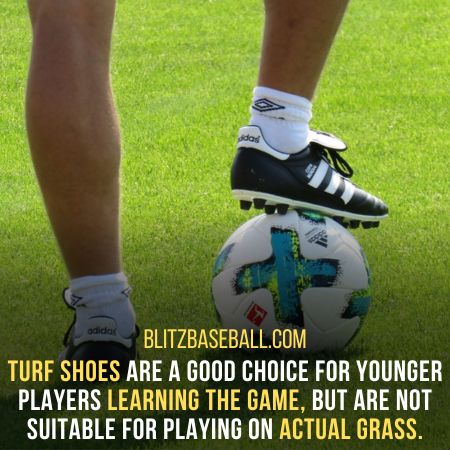This article provides a comprehensive comparison between metal vs molded baseball cleats, aiming to assist players in making informed decisions based on their specific needs and circumstances.
Metal cleats are renowned for their ability to enhance performance by increasing speed and offering superior traction, thereby facilitating fielding and enabling longer hits.
They are heavier and more durable than molded cleats, making them suitable for adverse weather conditions. However, their usage is restricted in minor baseball leagues and high school fields due to safety concerns and potential field damage.
Conversely, molded cleats are widely popular at the grassroots level, offering optimal traction for quick stops and changes in direction.
They are more affordable, comfortable, and appropriate for players of all ages. Equipped with additional rubber layers, molded cleats provide a better grip on the ball.
Ultimately, the choice between metal and molded cleats depends on players’ positions, playing styles, and adherence to league regulations.
Through an objective and analytical approach, this article examines the benefits and advantages of each cleat type, aiding players in making an educated decision.
Key Takeaways
- Metal baseball cleats provide better traction and are practical for short distances and wet conditions.
- Molded baseball cleats offer the best traction for quick stops and changes in direction.
- Metal cleats are not allowed in minor baseball leagues for safety reasons, while molded cleats are suitable for players of all ages.
- Turf shoes are a good choice for younger players learning the game, but are not suitable for playing on actual grass.
Metal Vs Molded Baseball Cleats

Benefits of Metal Cleats
Metal baseball cleats provide better traction than molded cleats, making them an ideal choice for players who need extra grip on harder surfaces and in wet conditions.
The spikes on the bottom of metal cleats allow for improved performance by increasing speed and making it easier to field balls.
Compared to molded cleats, metal cleats offer superior traction, especially on harder surfaces. However, it is important to consider the disadvantages of metal cleats.
They are heavier and less comfortable than molded cleats, which can affect a player’s performance.
Additionally, metal cleats are not allowed in minor baseball leagues for safety reasons. They can also cause damage to high school baseball fields and turf surfaces.
Despite these drawbacks, metal cleats are often preferred by professional players due to their durability, stability, and enhanced performance capabilities. Moreover, baseball metal cleats are not advisable for soccer.
Advantages of Molded Cleats

Molded cleats offer improved traction and stability on turf surfaces, making them a popular choice among players of all ages and positions.
These cleats are designed with features that prioritize comfort and affordability, making them accessible to a wide range of players.
The molded cleats’ rubber, polyurethane, polyethylene, TPU, or plastic construction provides excellent grip on turf, allowing players to make quick stops and changes in direction without slipping.
Additionally, the extra layer of rubber on the bottom of the cleats enhances grip on the ball, improving overall performance on the field.
Compared to metal cleats, molded cleats are more affordable and provide a comfortable fit, making them suitable for players with low arches or wider toe room. Moreover, they can also be used as football cleats.
Overall, molded cleats offer a balance between comfort and performance, making them a versatile choice for players of all ages and positions.
| Advantages of Molded Cleats |
|---|
| Comfort and Affordability |
| Traction and Performance |

Choosing the Right Cleats
When selecting the appropriate footwear for the game, players should carefully consider various factors to ensure they choose the most suitable cleats for their needs. Here are three key factors to consider in cleat selection:
-
Playing surface: Different cleat materials are designed for specific playing surfaces. Metal cleats are ideal for natural grass fields, while molded cleats are better suited for artificial turf or hard surfaces. It is important to choose cleats that provide optimal traction and stability on the specific playing surface.
-
Player position and playing style: The position a player plays and their playing style can also influence the choice of cleats. For example, pitchers may prefer lighter cleats for better agility, while outfielders may prioritize cleats with more ankle support for running and making quick stops.
-
Comfort and fit: Finding cleats that are comfortable and provide a proper fit is crucial for performance and injury prevention. Players should consider the width of the cleats, arch support, and overall feel when wearing them. Trying on different styles and sizes can help determine the best fit.
Considering these factors will ensure that players choose the most appropriate cleats for their specific needs, maximizing their performance and comfort on the field.
